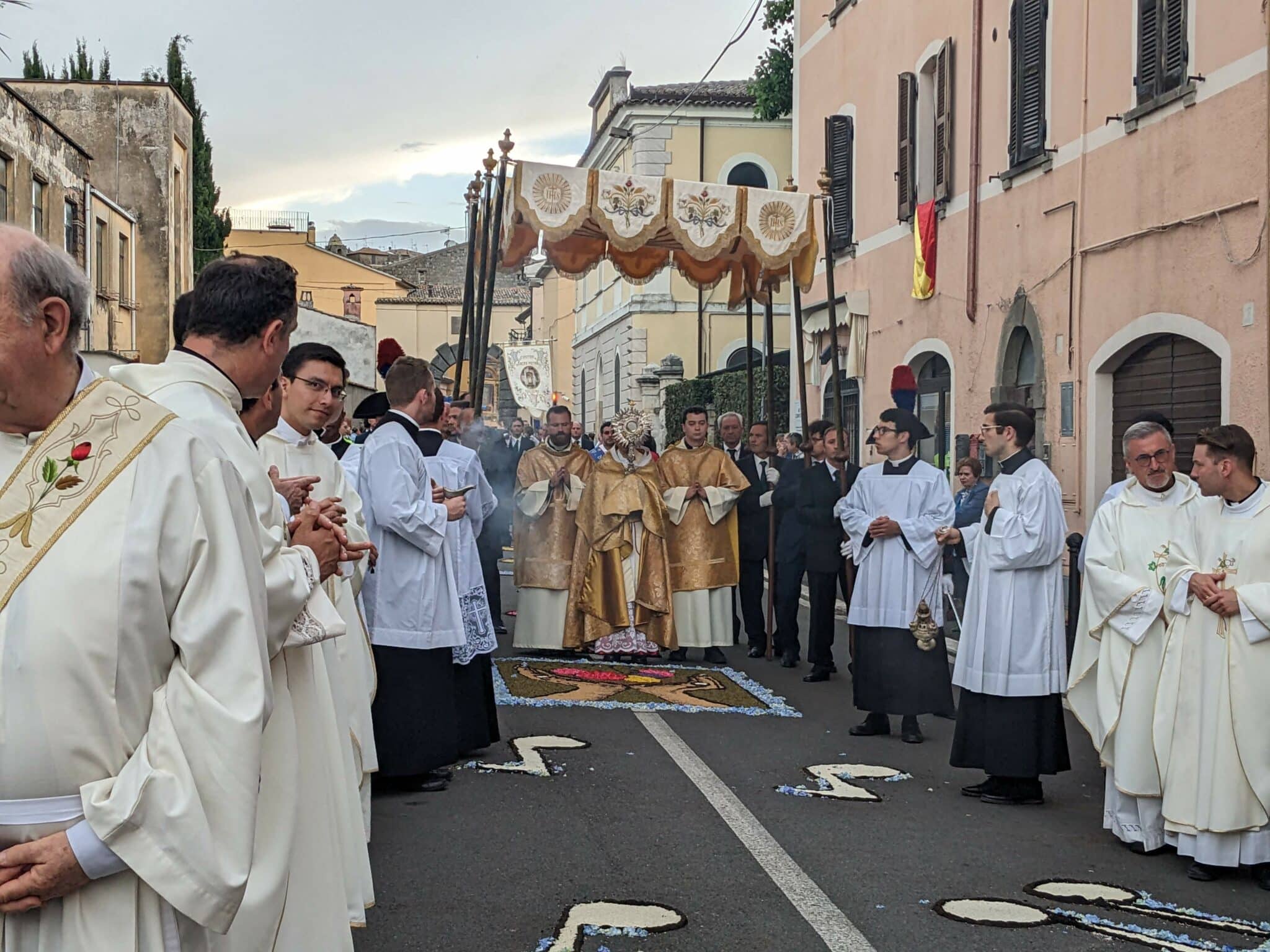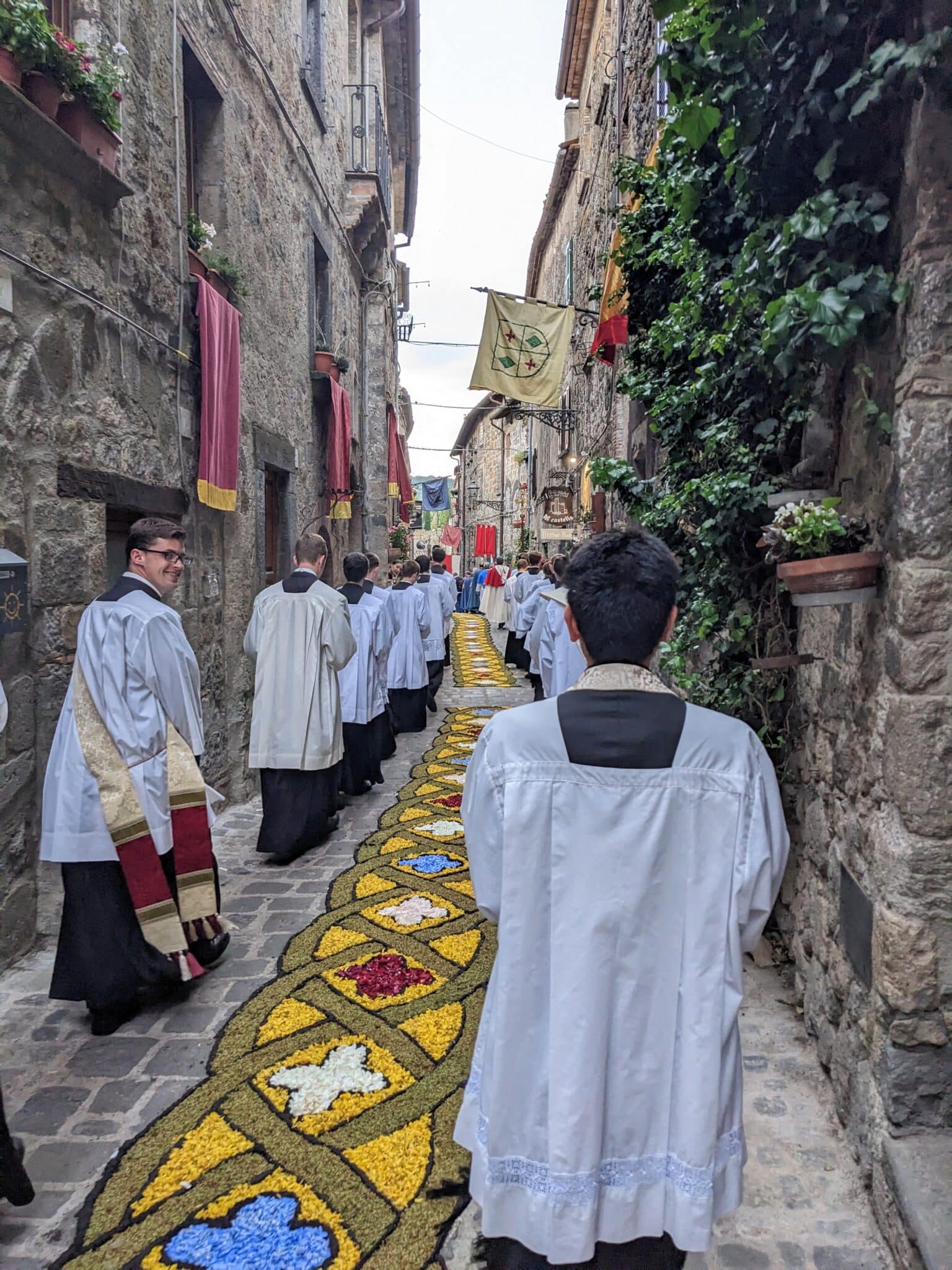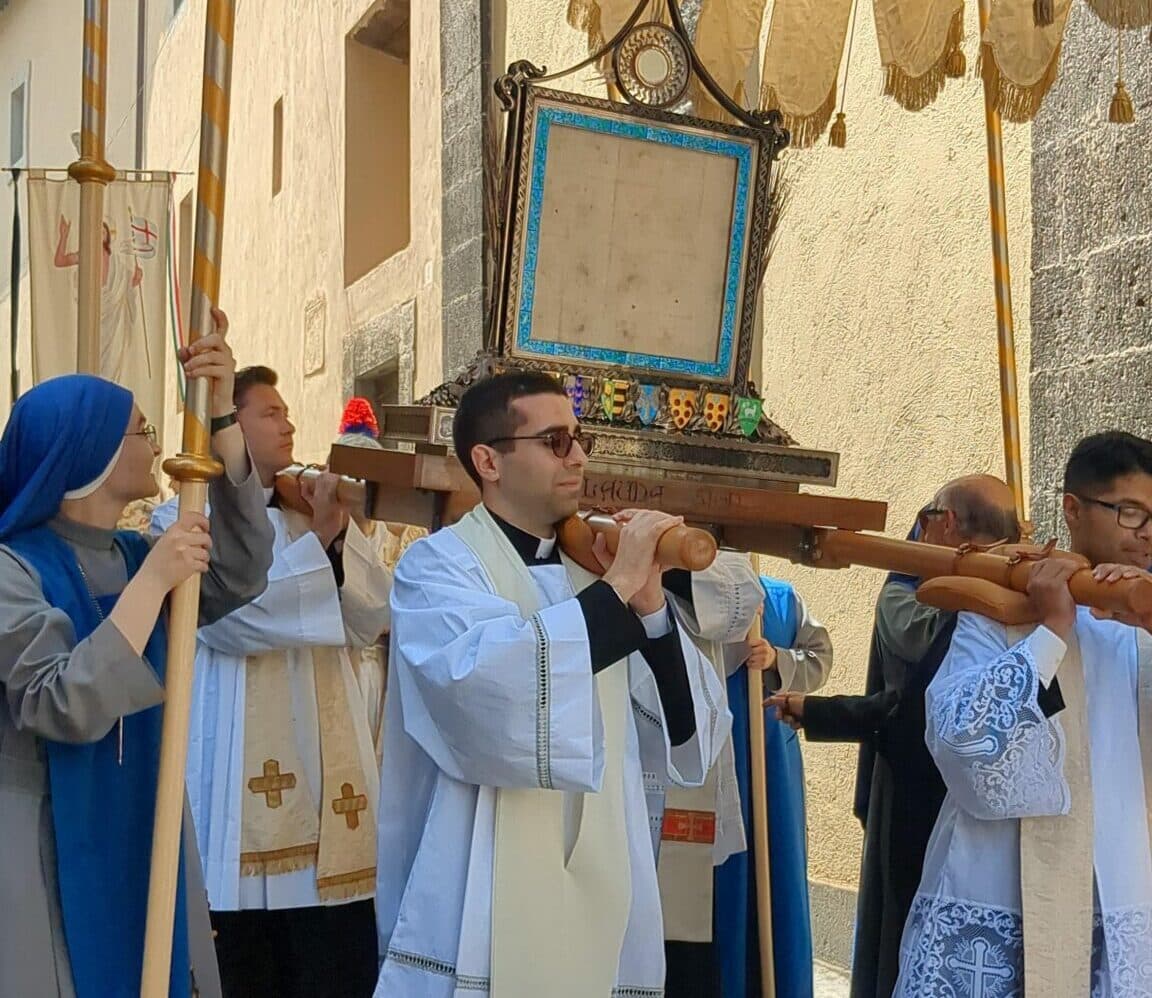
By Fr Bijoy Joseph
While Catholics lined the streets of Sydney to walk with Our Eucharistic Lord, four Sydney Catholics participated in the Eucharistic processions at Orvieto and Bolsena in Italy.
Fr Sebastian Hew, Dn Richard Sofatzis, seminarian Stephen Howard and myself, all studying in Rome, were privileged to be part of the procession in the towns so intimately connected with the feast
Tradition tells us that in 1263, a travelling priest was celebrating Mass in the Church of St Christina in Bolsena and was having doubts over the real presence of Christ in the Eucharist.
As he was elevating the host, it became flesh and started dripping blood. This blood collected on the corporal and on the altar.
The corporal was taken to nearby Orvieto where Pope Urban IV was in residence at the time.
As Archdeacon Pantaleon of Liège, the pope had already received the Eucharistic visions of St Juliana of Liège who saw the moon, full and beautiful, but crossed by a dark line.
She came to understand that there was a missing feast day in honour of the Eucharist.

When the pope was confronted by the Eucharistic miracle, he knew he had to institute the universal feast of Corpus Christi, doing so in 1264.
He contacted St Thomas Aquinas who was resident in Orvieto at the time to compose the prayers and texts for the Mass and Office, as well as several hymns for the feast including the Pange Lingua, Panis Angelicus, Lauda Sion and Adoro Te Devote.
The cities of Orvieto and Bolsena, the historic epicentre of Eucharistic devotion, still celebrate this miracle to this day with two different Eucharistic processions.
The first processes a reliquary monstrance containing both a newly consecrated host and the treasured bloodied corporal of 1263 through the streets of Orvieto.
The procession, comprised of the various confraternities, medieval guilds, soldiers with full medieval armour and weaponry, seminarians, priests, bishops and Cardinal Fortunato Frezza accompanied Our Lord as has been done for the last 700 years or so.
I was fortunate enough to be given a turn to carry the reliquary monstrance through the streets, entering the Church of San Rocco where cloistered discalced Carmelite nuns greeted us with hymns of praise and the throwing of flower petals. It was a foretaste of heaven.
The nuns’ faces were filled with joy and encountering the one whom they contemplate and pray to day and night.
Their eyes were not transfixed on us four priests carrying the reliquary monstrance, but rather on the Eucharistic Lord. I was filled with wonder seeing their faces.

It struck me later how profoundly priestly that experience was—I am called to consecrate, lift up, and bring the Eucharistic Lord to the faithful so that they receive life through him. The Bishop of Orvieto, Gualtiero Sigismondi, then proceeded to incense the Lord.
The second procession goes through Bolsena, carrying Our Lord in a monstrance and the bloodied altar stone in a separate reliquary. The town prepares its famous floral street art with images of Jesus, Mary, and angels greeting the procession as they walk.
The procession goes around the artworks ensuring that the flowers remained untouched. It is only the bishop, carrying the monstrance, flanked by two deacons and a canopy, and the reliquary, held by six custodians, who walk directly over the flowers. The flower arrangements are only for the Lord!
While Eucharistic fervour has lessened of late—like most of the rest of the Western world—these towns preserve some of the original essence of Eucharistic devotion, trying to praise the Lord with their bodies, talents, hymns, craftsmanship and presence.
